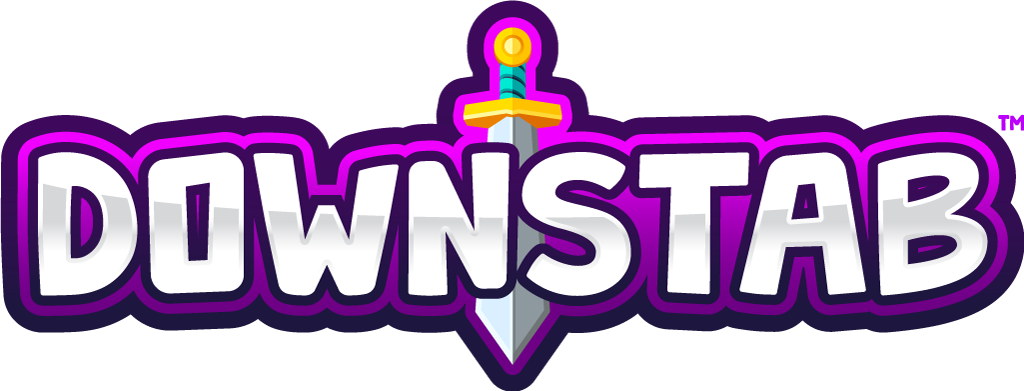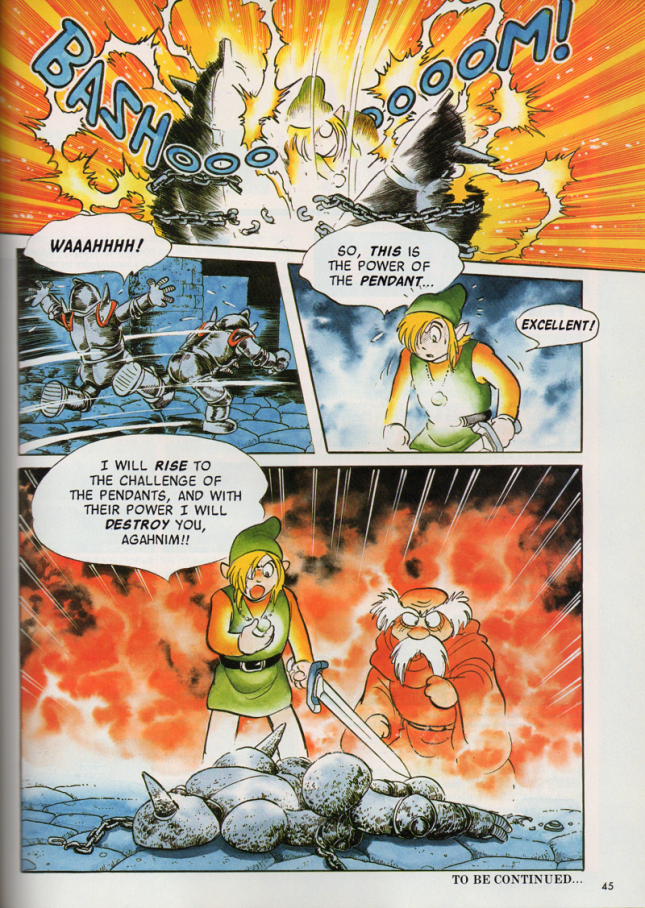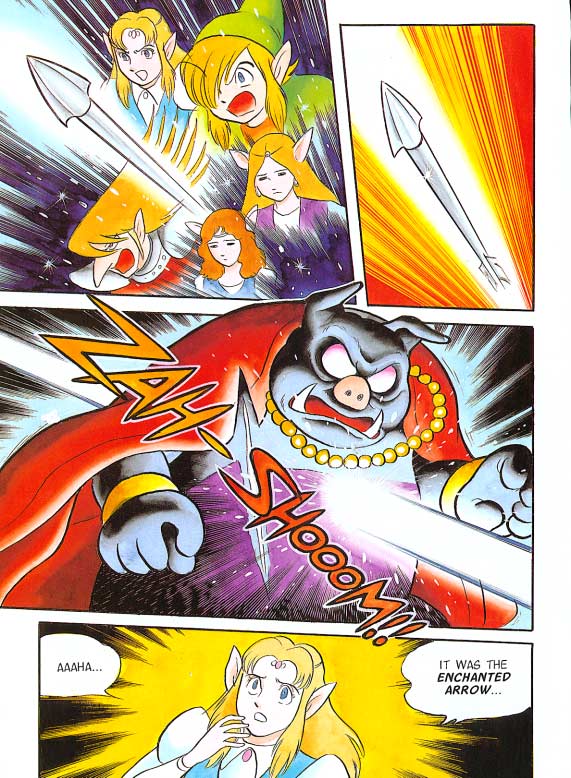A brand new Legend of Zelda comic was released last week. Well, not exactly brand new: it’s a re-release of a 12-part saga originally seen in Nintendo Power back in the 90’s. But for the first time in a long time it’s been bound together in a near 200 page full color novel. Based on the Super NES classic The Legend of Zelda: A Link to the Past and written and drawn by famous manga artist Shotaro Ishinomori, the grand adventure spins the familiar storyline and adds new characters, plot developments, and some lighthearted humor to make the tale unique. Though not as grandiose as the video game it is based on, the comic is still wholly worth your time if you’re a Zelda fan!
If you haven’t played A Link to the Past then what is wrong with you? Seriously, just stop reading this and go play the game. It’s on damn near every Nintendo console out there, and seeing as it’s easily one of the best games on the console and in the cherished series, it won’t be time wasted.
Now that we’ve dealt with that possible wrongdoing let’s talk about the Legend of Zelda: A Link to the Past comic book. The storyline of course follows Link as he tries to save Princess Zelda. Following the plot of the game, the evil wizard Agahnim has captured the titular princess and, using the power of the Seven Sages, is attempting to break a seal on the Dark World and bring forth all kinds of destruction to the peaceful land of Hyrule. Worse yet, he intends to free Ganon, the main antagonist of the entire Zelda series and owner of the Triforce of Power. As it is in the games it’s up to Link to become a true hero and save the day.
There are familiar story elements here that move adjacent to the game, including searching for the pendants of virtue, finding the Master Sword, and travelling to the Dark World to free the imprisoned maidens and Princess Zelda herself. If you’ve played the games you’ll enjoy seeing some of these scenes retold in a new medium. I for one really enjoyed Link’s battle with Agahnim before travelling to the Dark World: it was pretty action packed, and really took the best parts of the video game fight and brought them to life on pen and paper. I found myself several times humming in my head the overworld themes and other musical scores as Link traversed familiar locales from the game. To keep things fresh Ishinomori has added a few new characters and plot points. These are welcome additions, because if the book was a literal translation of the game I’d have nothing to be excited about because I already knew what was coming! That being said there are lots of locations, interactions, items, weapons, enemies, etc. cut from the graphic novel. I won’t spoil what’s all included, but needless to say there are going to be some omissions that you’ll wish were included.
I found the artwork to be one of the best aspects of this book. Ishinomori’s style is reminiscent of the visuals seen in the original NES Legend of Zelda’s instruction manual, with a sort of dwarfed Link in a somewhat silly nature. In a classic manga style I found Link flailing his arms or falling down a lot. It was different, for sure, for the Hero of Time, but it was still enjoyable. Coupled with Link’s more humorous nature, the whole style of the comic came off as much more lighthearted than the overall storyline expressed. I was never laughing out loud, but then and again I found myself cracking a smile as Link made a witty comment while attack a small group of Stalfos. Those looking for a perfect retelling of the game, or perhaps a darker storyline seen in future games in the series, will be spectacularly saddened that this game features none of those things. And that’s why it’s fun: it doesn’t take itself too seriously and pays respect to the source material.
The book itself is an oversized graphic novel. When I thought about it this made sense, seeing as the original print was in the pages of the Nintendo Power magazine, so to retain the original aspect and visuals the pages needed to be of similar size. Long story short, this book will stick out on your shelf. Not a bad thing, but a turnoff for some. I thought the oversized pages made for brighter visuals inside, and I appreciated the extra space to fill my eyes with action and color. Having never read the first run of this I can’t speak on whether it’s a truly accurate reprint or not, but it certainly seems the case.
Sadly there aren’t any extras included with this release. I feel like it’s been standard for re-releases as well as graphic novels in general to include some bonus material to entice new and old readers. I would have liked to see some sketches or at the very least a foreword by Shigeru Miyamoto or someone else involved in the series. You’re paying for the 12-issue comic and that’s it. Not a terrible omission, but definitely a missing piece that only would have made the deal sweeter.
The Legend of Zelda: A Link to the Past comic/graphic novel is a healthy investment for Zelda fans. It is a fun retelling of a classic story with a bunch of new and exclusive content you’ll only see in this version of the story. Though bonus materials are nonexistent and the whole experience will be over in an hour or so, Ishinomori’s fun art style and twist on the cherished storyline will entertain you from beginning to end. If you’ve played A Link to the Past, grew up in the 90s playing any video game, or simply fancy yourself a Nintendo fan, you should get this without delay.
Laters,
Jsick











